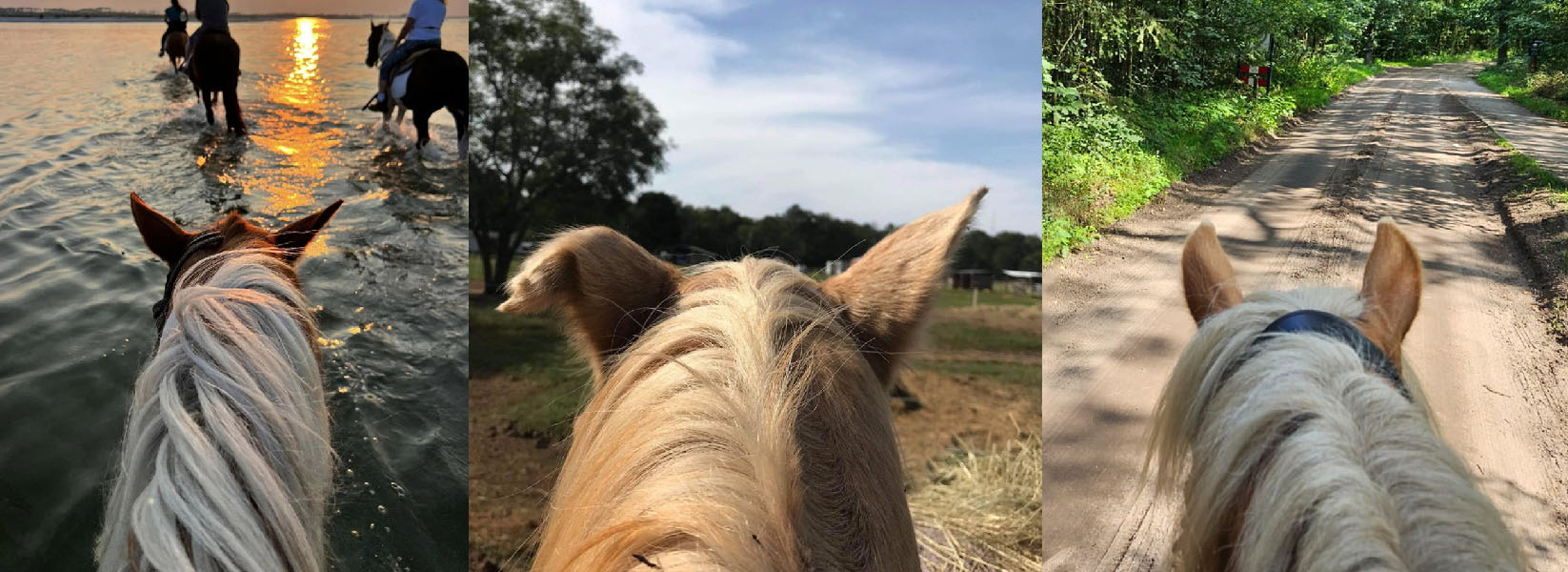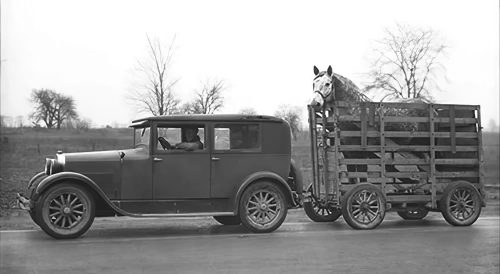
The South Carolina Horse Council is pleased to offer Equestrian Trails of South Carolina Guide. There is no charge for the booklet you can get one from a director or pay shipping. Please include your address when requesting a guide.
There are over 650 miles of publicly accessible horseback riding trails in South Carolina and more private horseback areas than you can count. In other words, this is a fine state for those of us who enjoy trailblazing down equine pathways.
Our trails are diverse not only in their landscape, but also in their management. Federal, state, and private non-profit organizations all provide equestrian trails; some even include posh stalls and electrical hookups. Others may be available for day-use only. It’s wise to check with the management agencies to determine important issues such as condition of trail or whether some usage fees have changed. Some state forests and parks require riders to have a permit and South Carolina law requires a negative Coggins Test Certificate be present for all horses in state parks and forests.
Horseback riding in South Carolina State Parks is a longtime favorite activity, which is why you’ll find miles of horseback riding trails that are just as hoof-friendly as they are boot-friendly.The natural and geographical features in South Carolina’s parks are so diverse, that horseback riders will be able to traverse a variety of terrain.
Challenging rides can be found along the rocky outcroppings at Kings Mountain, while Lee State Park offers a flatter, swampy trail through the Sandhills region. Many of the parks offer short and easy routes, but riders seeking longer distances can find more than 20 miles of horse trails at H. Cooper Black, Jr. Memorial Field Trail and Recreation Area and Kings Mountain State Park. Coastal rides can be taken during the winter months at Myrtle Beach and Hunting Island State Park.
There is no shortage of equestrian facilities and amenities, either. Long rows of equestrian stalls, show rings for competitions and equestrian campsites with water and electrical hookups are available at several of the parks. Guests will need to contact the park for rental rates and availability, and must have negative Coggins papers for their horse in order to use the park’s facilities. Equestrian trails and amenities can be found at H. Cooper Black Jr., Kings Mountain, Lee, Poinsett, Cheraw
Want to Help?
Join the efforts to preserve the heritage of SC equestrian trails.
Each of these groups enhance outdoor recreation, and to help preserve and promote the natural and cultural resources of Trails. It is a vital reminder of the history of South Carolina and as a valuable natural resource for many visitors. Purpose is to improve, preserve and maintain South Carolina equine trails under the guidance and direction of Park Directors.
Some goals are to improve and create various projects, including, camping facilities, and horse trails & equestrian facilities, historical landmarks, signage, and awareness of the natural beauty as well as fellowship with outdoor enthusiasts.
The South Carolina Horse Council thanks those who work together in accomplishing these goals.
There is much to be done, volunteer and help make it happen. Working together promotions public awareness of the values and benefits of state parks and SC trails.
| Equestrian Trails of SC guide |
| Name |
| Phone Number |
![]()
South Carolina Resources
National Groups Helping with Trails Issues
Additional equestrian trails in SC.
Please visit https://www.sctrails.net for details on the trails below.
Andrew Pickens Ranger District Office
112 Andrew Pickens Circle
Mt. Rest, SC 29664
Phone: (864) 638-9568
Ann Springs
2573 Lake Haigler Drive,
Fort Mill, SC 29715803.547.4575
Clemson Forestry & Environmental Conservation
261 Lehotsky Hall –
Clemson, SC 29634
(864) 656-3302
Croft State Park
450 Croft State Park Rd,
Spartanburg, SC 29302
864-585-1283
Enoree Ranger District Office
20 Work Center Road
Whitmire, SC 29178
Phone: (803) 276-4810
Francis Marion Ranger District Office
2967 Steed Creek Road
Huger, SC 29450
Phone: (843) 336-2200
Forest Supervisor’s Office
4931 Broad River Rd.
Columbia, SC 29212
Phone: (803) 561-4000
H.Cooper Memorial Field Trail Area
279 Sporting Dog Trail,
Cheraw, SC 29520
(843) 378-1555
Hitchcock Woods Foundation
P.O. Box 1702
Aiken, SC 29802
(803) 642-0528
Kings Mountain State Park
1277 Park Rd,
Blacksburg, SC 29702
803-222-3209
Lee State Park
487 Loop Rd,
Bishopville, SC 29010
Phone: (803) 428-5307
Long Cane Ranger District Office
810 Buncombe Street
Edgefield, SC 29824
Phone: (803) 637-5396
Manchester State Forest
6740 Headquarters Rd,
Wedgefield, SC 29168
Phone: (803) 494-8196
Sand Hills State Forest
16218 Highway 1
Patrick, SC 29584
Phone: 843-498-6478
The SCHC Trails Committee announces a great source for SC trail information.
This website is for avid trail riders. It offers great trail information and weather at each location.

Each time you hook your horse trailer up:
Before Hitch Up – Make sure your vehicle is rated to tow the weight. Check hitch carefully. Check balances of trailer, make sure rig is level, make sure lights and brakes work, remove rust on hitch. Check lights and turn signals being sure all work correctly. Check the wiring and replace any bulbs that need replacing.
Before You Load Up – Check trailer for bees, remove old hay, and prepare horse to be loaded.
Before You pullout – Walk all the way around the rig, check all doors. Check hitch to be sure everything is done correctly. Check plugs. Be sure to remove wheel chocks.
Truck/Trailer
Horse Supplies/Equipment
First Aid
Trailering: Safe Driving Strategies
when hauling your horse, their safety and comfort should be your main concerns.
Some thoughts on safe driving.
Hauling is a matter of common sense and good horsemanship. With safety in mind and some careful planning, you can help ensure that your future travels will be safe and enjoyable.
If you own horses long enough, sooner or later you are likely to confront a medical emergency. As a horse owner, you must know how to recognize serious problems and respond promptly, taking appropriate action. Avid horsemen swear by preparedness.
No matter how watchful you are the unexpected sometimes happens. If an emergency does arise, you’ll be in much better shape to help your horse if you’ve got a first-aid kit on hand.
You should always consult with your veterinarian regarding the specific needs of your horse.
RECOGNIZING SIGNS OF DISTRESS
When a horse is cut or bleeding, it’s obvious that there is a problem. But in cases of colic, illness, or a more subtle injury, it may not be as apparent. That’s why it’s important to know your horse’s normal vital signs, including temperature, pulse and respiration (TPR), as well as its normal behavior patterns. You must be a good observer so that you readily recognize signs of ill health.
WHAT’S NORMAL?
There will be variations in individual temperature, pulse and respiration values. Take several baseline measurements when the horse is healthy, rested, and relaxed. Keep a record of them in your first aid kit, so you have them to compare to in case of an emergency. Normal ranges for adult horses are:
The sight of blood may unnerve you but maintaining your presence of mind can save your horse’s life. The initial steps you take to treat a wound can prevent further damage and speed healing. How you proceed will depend on your individual circumstances, and you must exercise good judgment.
Having all supplies in a container for quick portable access can make difference in an emergency. Be sure to have a parred down first-aid kit you can carry on the trail.